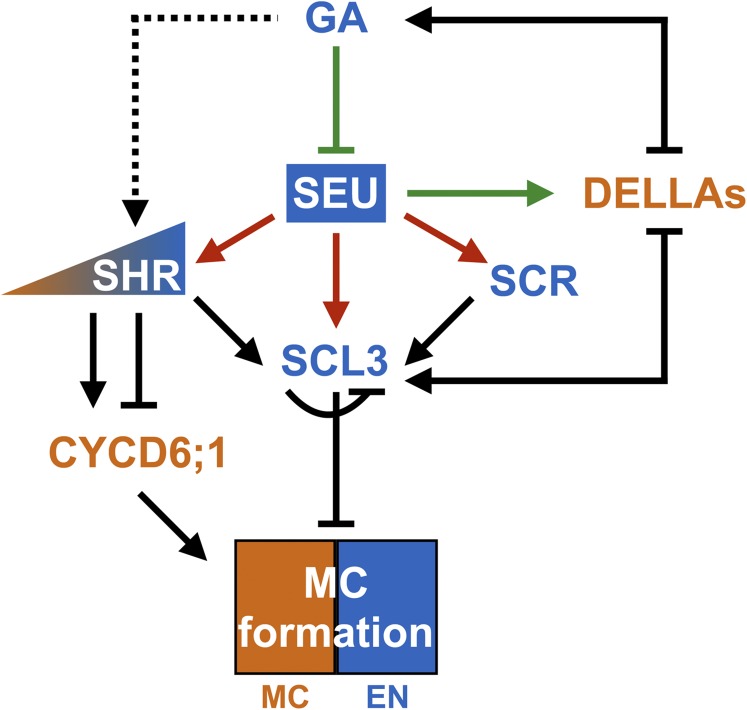Figure 5.
A simplified yet complex regulatory network for MC formation. In the Arabidopsis root meristem, MC forms by periclinal cell division in the endodermis in a developmental stage-dependent manner. Previous studies (black arrows and inhibition signs) have revealed that GA and several GRAS family transcription factors, including SHR, SCR, SCL3, and DELLAs, are involved in the precise control of MC formation. SHR (at high abundance, which inhibits transcription of its direct target CYCD6;1), SCR, and their direct target SCL3 (which represses its own transcription) inhibit MC formation, whereas SHR (at low abundance, which induces transcription of CYCD6;1) and DELLAs (which are direct upstream regulators of SCL3 and known to induce the expression of early GA biosynthesis genes) promote it. GA triggers degradation of DELLAs and may influence abundance of SHR, thus preventing MC formation. In this study (green arrow and inhibition sign or red arrows), we show that SEU is a critical new player that integrates GA signaling with the transcription inputs from the SHR-SCR-SCL3 module to regulate MC formation. SEU is transcriptionally repressed by GA. SEU is a transcriptional activator of SHR, SCR, SCL3, and DELLAs, and physically associates with promoter regions of SCR, SHR, and SCL3 (red arrows). The colors orange and blue indicate factors that positively (orange) or negatively (blue) regulate MC formation, respectively. EN, Endodermis.

